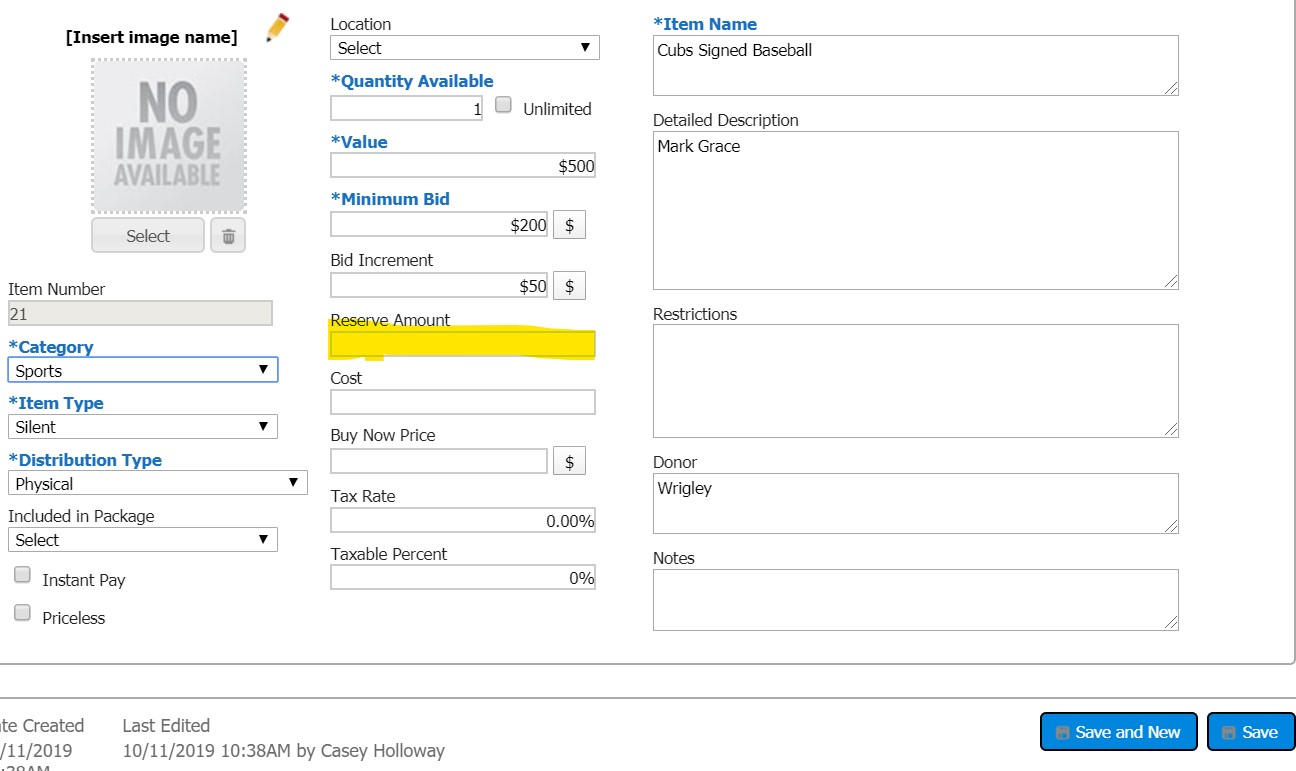Consignment Items
Consignment items are items that have a cost associated with them. Typically consignment items are secured through a company or individual with the agreement that the non-profit will pay a predetermi…
Updated
by Ashley McClure
Consignment items are items that have a cost associated with them. Typically consignment items are secured through a company or individual with the agreement that the non-profit will pay a predetermined amount back to the "donor" in the event that the items sell in their auction(s). The price of the items are typically discounted and therefore, can be an appealing option.
There are many consignment companies on the market that a non-profit can use to help improve the variety or value of a live or silent auction.
Reach out to your AES Representative for recommendations of companies that we have positive experience with.
There is a specific way to set up a consignment item in Auction Conductor to make sure that the purchase price is met through bidding activity. This ensures that the non-profit will not have an out of pocket cost for any consignment sales.
Once it is determined whether the data entered will be an Item or a Package, it is important to use the "Reserve Amount" field to track the cost associated with a consignment item. This field will prevent any bidding activity from taking place that is below the Reserve Amount.

It is important to take consideration when using consignment items. Often times they can be misleading to bidders as they are not aware of the costs associated. It can appear that the amount being raised is more than what the non-profit will actually receive. Additionally, it is important to research consignment companies carefully to ensure costs are clear and identified.
The Cost field is not the same as the Reserve Amount field. The Cost field is used to track expenses related to items or packages (for example: materials used to create a basket of items). This field can be exported into Excel format in post event reports for reimbursement or tracking purposes. The cost field is not considered by the software when lowering minimum bids and will not provide any fail-safe measures with minimum bid calculations.
How did we do?
Delete a Bid
